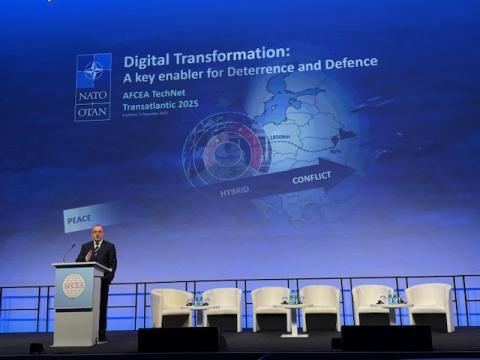On Point: Q&A With James E. Ortega
Tell us about the Spectrum Center’s mission.
The Navy and Marine Corps Spectrum Center (NMSC) is the Department of the Navy’s (DON’s) single focal point for electromagnetic-spectrum governance. Our mission is to ensure every DON platform, weapon, sensor and network has legal, interference-free access to the frequencies it needs, when and where it needs them. We certify equipment through NTIA, secure U.S. and host-nation frequency assignments, resolve electromagnetic interference and provide on-call operational support to Fleet and Marine forces worldwide. In short, we protect the Navy’s ability to maneuver in the spectrum, so warfighters can maneuver confidently in every other domain.
What new technologies or capabilities do you need to accomplish that mission?
To stay ahead of rising demand and adversary pressure, we need AI-enabled planning tools that can sift vast propagation and emitter data sets and propose deconflicted frequency plans in seconds. Additionally, a secure, cloud-native data environment linking End-to-End Supportability System, Link-16 Pulse Deconfliction Server, Joint Spectrum Interference Resolution, and operational command-and-control systems would give planners, operators and regulators a shared real-time picture.
What challenges does the center help the Navy overcome?
NMSC mitigates the congestion and contestation that dominate today’s spectrum environment by harmonizing Navy, joint, allied and commercial requirements so critical systems remain mission-capable. We translate accelerated acquisition timelines into regulatory reality, attempting to mitigate spectrum regulatory requirements from derailing program schedules. We broker multinational frequency agreements for exercises and operations, enabling seamless coalition interoperability. Finally, we address the spectrum-talent gap through training and mentoring programs for the next generation of electromagnetic-spectrum professionals.
What have you accomplished in this position and what do you expect to accomplish in the future?
Since taking the helm, I secured fiscal year 2026 funding in a challenging fiscal year and pursued a partnership with the DOD CIO [Department of Defense chief information officer] office to identify resourcing to rebuild the Link-16 Pulse Deconfliction Server for a tenfold capacity increase. Over the next year we will complete NMSC’s realignment under Fleet Forces Command and overhaul the command’s spectrum monitoring toolkits, fielding next-generation sensors and analytics that give the command real-time electromagnetic visibility and rapid interference resolution in congested maritime corridors.
What are some lessons learned from your experience with industry that you bring to this position?
Industry taught me that spectrum must be designed in from day one; to reinforce that point, one of the goals is to launch a road show with each systems command to drive home the importance of integrating spectrum planning at the very start of every program.





Comments